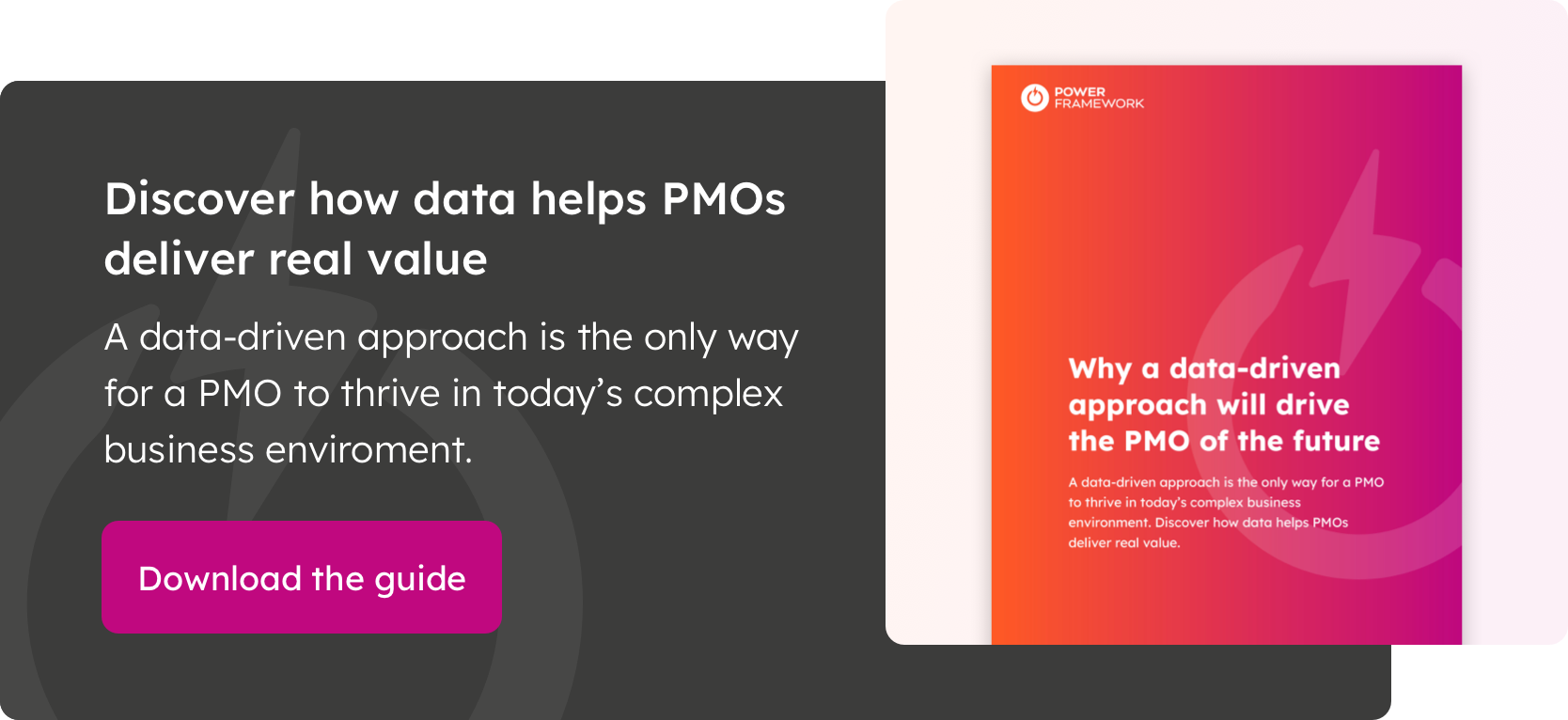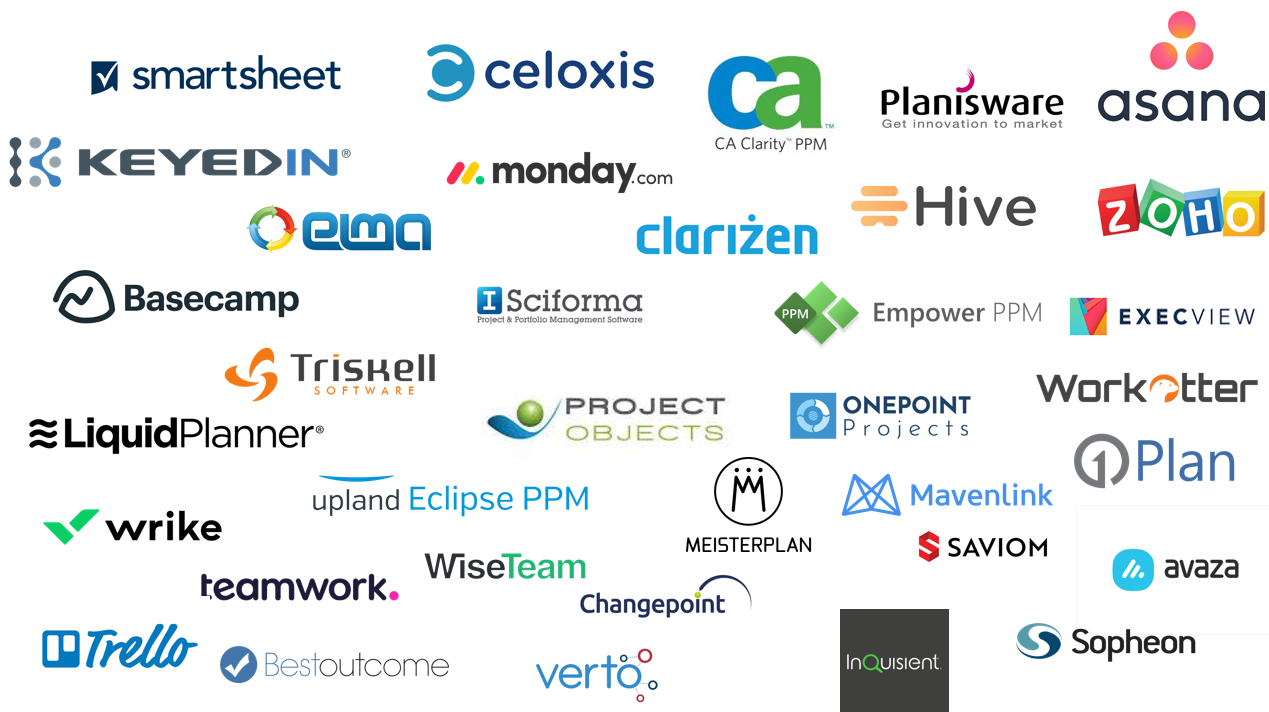
Defining reporting standards and governing processes to collect and share data is a core remit of the PMO, aiming to deliver visibility of portfolios and projects to decision-makers.
So the PMO always aims to be data-driven, yet that doesn’t mean a data-driven culture is an inevitable outcome. There certainly are challenges in establishing such a culture – but we believe there is no platform like the Microsoft Power Platform to help you put the essential tools in place to make it happen.
What does “data-driven” mean?
A data-driven approach is when progress and decisions are measured and influenced by data rather than intuition or personal experience.
What are the challenges of achieving a data-driven culture?
No organisation says, “let’s not use data, let’s go by intuition alone.” Most professionals have a genuine desire to make good decisions based on data. But the challenge they face is data quality. Data can be:
- Missing
- Late
- Disconnected
- Inaccurate
- Poorly designed
- Lacks depth or history
- Difficult or impossible to access
Business culture can also play a role. Some feel that their superiors will override data-driven recommendations with their gut feeling.
While some of these challenges are clearly due to organisational culture, process, and knowledge, many organisations fail at the first hurdle in implementing effective tools to collect, safeguard and analyse data.
In the world of projects and portfolios, many neglect to establish a central data store. Instead, data is distributed across spreadsheets, PowerPoint decks and SharePoint lists. If databases are available, they serve a narrow purpose and are disconnected from each other. Reporting is often manual, published with delay, and doesn’t provide any facility to drill into data.
We need tools to enable a data-driven approach
We know first-hand how many organisations find themselves in this challenging position. Implementing an enterprise project portfolio management software is a popular solution, but they often fail to deliver their promised benefits. Sometimes these tools decline in use because they’re inflexible, challenging, or expensive to operate.
This lack of engagement with new tools is a major challenge for many organisations. If you can’t get people on board with a new tool, you won’t get the data you need, no matter how powerful it is.
But a data-driven culture is unachievable without data gathering tools. You can’t rely on Excel to help you drive change.
Key capabilities of tools that enable a data-driven culture
The tools we need to support a data-driven PMO should deliver on three pillars of capability:
Data gathering: Effective tools make it easy and efficient for users to open data sources and capture information. For example, to collect data through integrations between systems or enable third parties like suppliers, partners, or customers to contribute information.
Data security: Data tools need to safeguard data from inappropriate use and ensure compliance. But it should also be tailored to the needs of the data entry user community and be easy to use to improve adoption. A great user experience will facilitate data timeliness and quality, which in turn should be monitored easily by the PMO.
Turning data into value: Rich quality data needs to be converted into insights that drive decision-making. These insights need to be presented in attractive dashboards that engage stakeholders.
If, in addition to the above capabilities, the chosen tool is fit for rapid deployment and affordable, you’re on to a winner.
The Power Platform is the perfect tool for data-driven PMOs
The Power Platform is not a PPM tool – it’s a platform of tools and services like Power Apps, Power BI and Power Automate. It can join up collaboration and PMO work management tools and even combine them with world-class Artificial Intelligence components to deliver all-new capabilities.
The Power Platform helps you gather data
Power Apps allows you to deploy applications with efficient and easy user experiences, personalised for different user roles and devices. This improves adoption and data entry quality. You can easily engage external parties as well, such as suppliers or customers – even allowing the deployment of web-based portals.
Power Automate unlocks powerful integration scenarios with 100s of out-of-the-box connectors to services and databases. The ability to harvest data from connected business systems, work management and planning tools provides great opportunities to enrich your data set and connect users.
Artificial Intelligence features take your data gathering capabilities even further thanks to Robotic Process Automation, bots, automated forms processing, imaging, and language services.
The Power Platform helps you assure and secure data
Key to this is the fact that data resides in your own Microsoft tenant. This removes data hosting concerns and keeps your data protected by your other IT security processes.
Within the platform, role-based security controls provide powerful facilities to secure access and visibility of data down to field level. Auditing is available to track field-level history showing who made updates when.
To assure data quality we need user adoption – and this is where the Power Platform shines. It is the home of Teams and other collaborative tools that people in your organisation likely use already. Seamless integration and single sign-on make it easy for your teams to use the tool.
The Power Platform helps you convert data into business value
It sure does – it is the home of Power BI. If your organisation has chosen Microsoft cloud, then most likely Power BI is your strategic BI tool already and for good reason. It opens a world of opportunities to publish engaging dashboards and empower data analytics.
How can you unlock the power of these tools for your PMO?
Combining these capabilities into a single PPM tool is simple. We’ve done it for you by creating Power Framework – a readily available digital PMO portfolio management software on the Power Platform.
It harnesses all the great capabilities of the Power Platform, rapidly deployed to help you gather, safeguard, and get value from your data. It is the essence of Program Framework's PPM tool experience and delivers a pragmatic accelerator to your journey towards a data-driven PMO.
Keen to find out more?
Watch this recorded webinar to see examples of Power Framework in action.
Would you rather see a personal demo? Just get in touch and let’s get it scheduled for you.
Join the conversation with our PPM software experts on LinkedIn.





